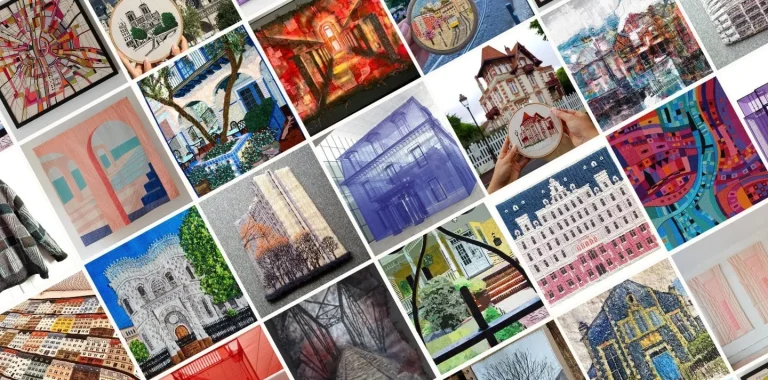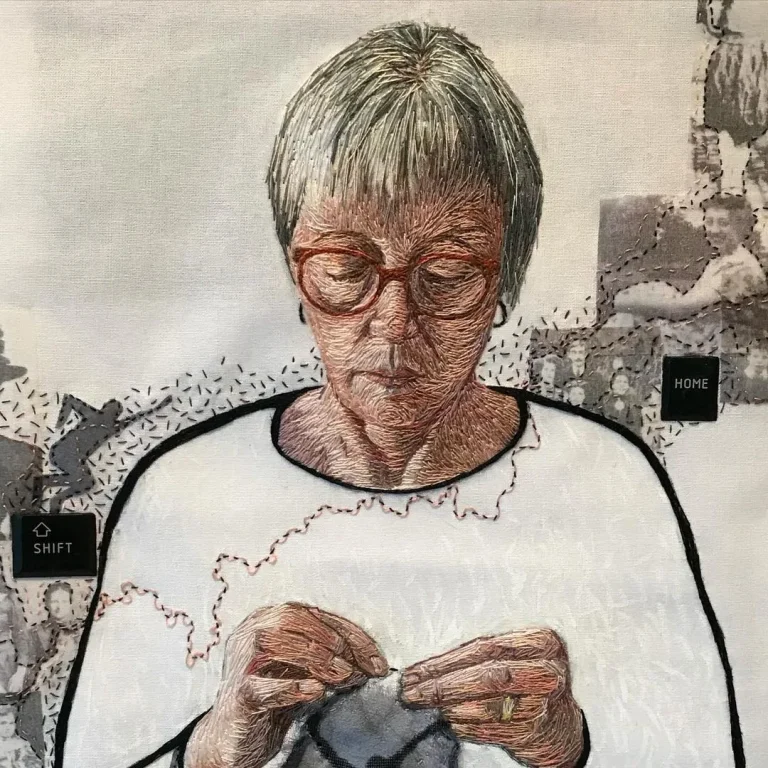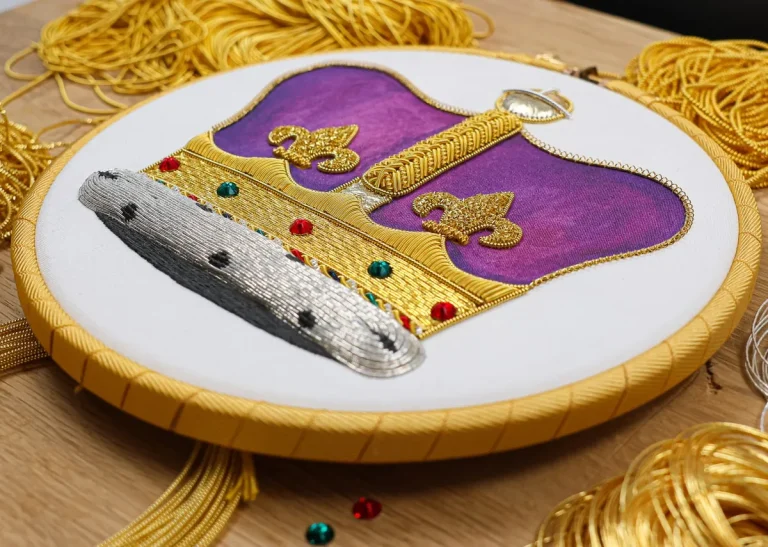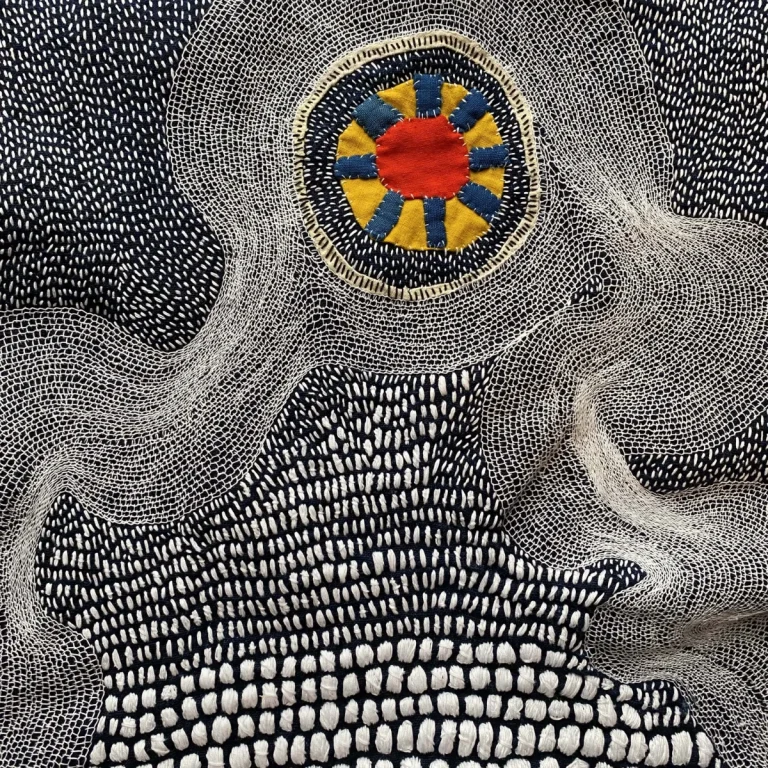It appears that the popularity of TV shows like Great British Bake Off and Great British Sewing Bee have sparked the nation’s interest in crafting. Last year the Guardian reported that sales at Hobbycraft increased by 7.6% from the previous year, which equated to £152m and stated that the UK craft market – worth £3bn – was growing by over 4.5% each year.
More recently the Craft & Hobby Trade Association (CHA-UK) reported that there are now over 1m people – mainly women – who have taken up sewing in the last three years, and as sales of sewing machines, knitting and garment patterns continue to rise we’ve officially entered into an era of crafting renaissance.
So whether you’re a bit of crafting expert or a complete needle novice we’re here to explain why you should take up crafting and join the millions that already belong to this vastly growing movement of creative makers.
Why you should start crafting
1. Satisfaction guaranteed
Learning a new skill can be frustrating. But, with a little practise and perseverance there is nothing more satisfying than finally getting it right. In fact it’s glorious!
The sense of satisfaction from crafting also comes from being able to create something out of nothing. Whether you’re making handmade birthday cards, creating an embroidery or knitting a garment for a new arrival, nothing really compares to the sense of pride you get from crafting.
2. Reduce Environmental impact
Since the late 80s retailers have been fuelling our obsession with fast-changing, cheap fashion. The rise in clothing stores like Primark have contributed to a ‘disposable fashion’ mentality. Its shoppers can treat themselves regularly with new and affordable outfits because the garments are made cheaply.
However, there are several problems with that we take very seriously at the School of Stitched Textiles.
- Garments made cheaply don’t last. Each year in the UK we send around 350,000 tonnes of textile waste to landfill, according to WRAP. And because many of these are made from synthetic fibres it can take 1000s of years to decompose.
- Fashion is the most polluting industry in the world. Creating cotton alone wastes a vast amount of water and waste waters are often left contaminated with acids, dyes, resins, softeners and fluorocarbons. Factories also contribute massively to air pollution which is added to by the shipping process since most clothing is made in Asia.
- There are also numerous social impacts associated with the production of clothing. Although many retailers are now trying to establish a living wage for factory workers, working conditions are still poor in developing countries. I’m sure you remember the Rana Plaza disaster in 2013 where more than 1,100 Bangladeshi workers were killed when the building collapsed.
Not only will making your own garments bring about a deep sense of fulfilment but good craftsmanship and quality materials mean clothes will survive more than a few washes, and are more likely to avoid going to landfill. If you decide that you don’t want it in years to come, it’ll still be good enough to pass on or donate.
3. Slow cognitive ageing
Ageing isn’t just a physical process; it affects the speed in which we can perform tasks and recall information. As we age we’re regularly told to stay active, but like any muscle the brain needs stimulation in order to stay fit and youthful.
Learning new skills like knitting or quilting require high level cognitive processes such as active engagement and long-term memory meaning these tasks engage the brain in a way that can’t be achieved when performing familiar tasks. A study by Psychological Science found that participants aged 60-90 showed a dramatic improvement in overall memory when learning new tasks for 3 months, compared to a group that did less complex tasks. Additionally, recent studies have shown that creative tasks can reduce chances of developing mild cognitive impairment by as 50%.
4. Relief stress
Crafts which require repetitive motions, like sewing and knitting in particular are said to bring about a mental calming akin to meditation. Complex tasks can help you focus and ‘switch off’ an overactive brain helping to relieve stress and induce calm.
5. Sense of belonging
Being a crafter means you’re part of a bigger community of other crafters. Not only can it get you out of the house – if only to buy supplies – there are a plethora of groups, events, workshops, exhibitions and even festivals that see thousands of like-minded crafters coming together.
Even if you don’t attend a craft class there are a range of beginner online courses that you can participate in. We offer a range of City & Guilds accredited courses in embroidery, knitting, sewing, stumpwork and more. Although our courses are taught via distance learning students can share their experiences with each other through online group discussion. We also establish forums where students can speak to one another as well as their tutors.
Essentially we, like any other crafting group, are very much a community and all textile crafters are welcome. You can follow us and share your project across our social media channels including Facebook and Pinterest.
6. Can lead to unknown opportunities
Here at the School of Stitched Textiles we have many success stories from our graduates. All have enhanced their skills through our accredited courses and gone on to flourish in their dream professions. Our courses expose students to skills or situations they may not have come across before, like completing a client brief. This has enabled our students to gain the confidence in their own ability and knowledge.
Take a look through our graduate stories for yourself.
7. Teach the next generation
Even though crafts like sewing and knitting are becoming increasingly popular with younger people, schools lack the facilities to teach these subjects or are missing from curriculums entirely.
If you’re a crafter then this is your chance to share knowledge, techniques and instil an interest in our youngsters. It’s also the perfect excuse to spend some valuable time with family or friends doing something you really enjoy.
8. Improve mood
If you’ve read the benefits above it’s easy to understand how crafting can increase your overall mood. With improved concentration, its ability to induce calm, engage with new people and connect with the younger generation; it’s the sense of pride, fulfilment and achievement that crafting can create that is unlike anything else. There’s also the pleasure that comes from completing a project – especially if you’ve made it for someone else to enjoy.
I don’t know about you but we’re happy just getting lost in the craft section at John Lewis.
Final thoughts
As the popularity in crafting continues to increase we’re sure this new found love for doing and making will become a movement that will define our time.
As the skills of the past continue to embellish our future we may even see a new wave of talented textile designers, knitter and tailors make a resurgence in the UK? We certainly hope so anyway. For now, let’s remember that crafting has many benefits, especially more complex crafts like sewing and knitting. With its potential to be nicer to the environment, its ability to improve mental wellbeing, mindfulness and even enhance your social life there’s no better time to join this movement of crafty makers.
So, what you are waiting for? Remember to join our community over on Facebook if you’re in need of a bit of inspiration.












4 Comments
Worthwhile taking up a craft or art hobby. I’ve been doing same all through my life with rewarding results. Presently experiencing Goldwork Embroidery which is intense and takes an age to do. You need patience by the bucket load.
You can really only give time to this type of work if you treat it as a relaxing hobby. If you do a full time job as well you will lose interest because it takes all of your creative ability to do properly (stitch craft or art).
The downside is failing eyesight that comes with age, so don’t leave it too long before starting.
Thank you Elaine. It sounds like you’re getting lots of enjoyment from your course. We’d love to see some pictures.
Thanks also for your great advice.
Pingback: What are benefits of choosing an accredited craft course? | SofST
Pingback: Honouring Women in Textiles | School of Stitched Textiles Blog